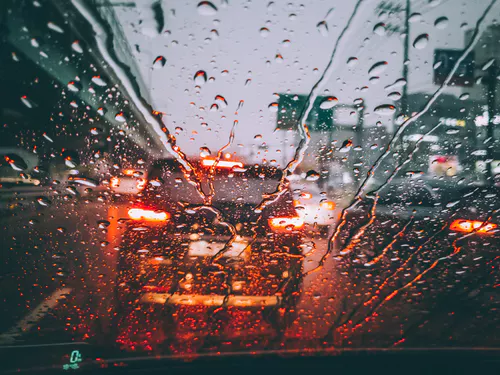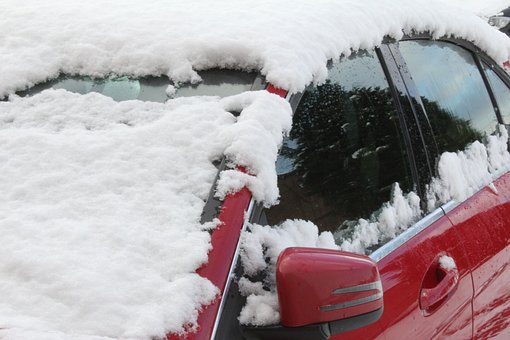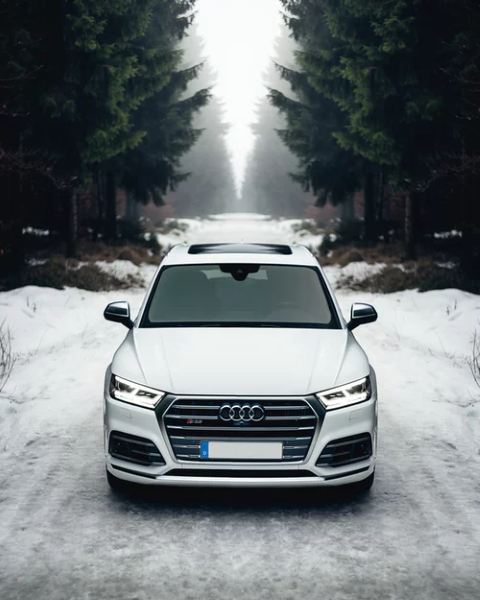Top 10 Car Windshield Replacement and Repair Tips
When taking care of your car’s maintenance, the windshield is usually the last thing on your mind. In most cases, all we do is check the wipers and we are good to go. However, this shouldn’t be so. Remember, making sure that the windscreen is in good condition can not only help to save your life, but it will also go a long way in ensuring that the lifespan of the windscreen is extended.

There are a million ways in which your windshield can sustain damage and this is one of those common vehicle repairs most car owners have to contend with. Even when these damages occur, the windscreen doesn’t fall apart or cave in. This is because, unlike the other glass window parts, the windscreen is made up of two layers of glass. In most cases, windscreen damages are as a result of external pressure, mostly from smaller or larger objects. The damage of the windscreen is usually determined by the position of the damage.
Let’s take a look at the various types of windscreen damage;
- Stone breaks – this is damage resulting from the impacts of a small stone or object. It usually develops into a larger crack if ignored
- Floater cracks – a floater crack may develop from the center of the windscreen, usually as a result of an object impacts or stress. Once it starts developing, there’s no going back, it extends to the entire surface.
- Star breaks – as the name suggests, these are cracks that originate from a point of impact forming short cracks that resemble a star.
- Ding – dings are usually as a result of small impacts that may cause a small chip of glass to fall. A ding doesn’t go through the two layers of glass.
- Stress cracks – these are cracks that don’t necessarily originate from an impact. They may be as a result of temperature changes or parking cars close to explosion sites such as quarries.
These are just but a few among the major types of windscreen damage. You may by now be wondering what some of the causes of windscreen damage are. Here are some of the most common ones.
- Driving on gravel roads
- Poor windscreen construction
- Driving too close behind heavy construction vehicles
- Poor windscreen installation
- Accidents
- Hailstorms
- Fluctuations in pressure
When these damages occur, depending on the extent of the damage, most car owners are torn between the decisions of repairing versus replacing. This is usually a hassle, especially given the fact that the longer you wait on some cracks, the more they get worse. So it’s a decision that you need to make real quick. It brings in the need to work closely with windscreen replacement and repair professionals. Once you’ve determined whether to replace or repair after getting advice from your windscreen expert, you can, therefore, move on to the next step. Let’s now take a look at the top ten car windscreen replacement and repair tips.
Windscreen replacement and repair tips
1. Determine the extent of the damage
The reason as to why we started out on the types of windscreen damages is so that you can familiarize yourself on the same. This will also help you to make an informed decision on whether to DIY or call a windscreen professional. This is the most important aspect of windscreen replacement and repair.
2. Do your research
Once you’ve determined the extent of the damage, it becomes easier to decide on the way forward. For minor damages such as dings, you may opt to do it yourself or alternatively call a professional windscreen technician. For the other complicated cracks, you want to ensure that the replacement procedure is handled by a professional. There are so many auto glass shops as well as professionals in the industry and deciding on the best one may sometimes prove to be overwhelming. Here are a few things you want to consider when choosing the best windscreen professional.
- Experience – it goes without saying that the person you want to give the responsibility of fixing your windscreen needs to have the experience and a good track record.
- Certifications – before you trust just anyone, check for their certifications and credentials. It will give you a good background of their training and experience.
- Insurance – working with glass is a dangerous undertaking that requires the experts to be insured. This will help to prevent you against unforeseeable lawsuits.

3. Compare quotes
Given the fact that there are so many players in the car industry who deal with auto glasses, it’s important that before you decide on anyone, you compare the quotes. Most auto glass companies are online and this becomes easier for you to compare different prices at the comfort of your home. While on the same note, go to the companies with the best service delivery. For your safety, go for companies who can bring the services to you. There are several factors that may affect the cost.
- The difficulty of the replacement procedure
- The model and age of your car
- Type of the windscreen
- The complex nature and size of the windscreen
- Your location
4. Check the glass quality
It’s very important that before the replacement process, you check the quality of the glass. The manufacturer’s quality is, of course, the best. If you don’t trust the other dealers, you have the option of contacting your car dealer or manufacturer. There are two types of windscreens; those manufactured by your original windscreen, otherwise known as OEM (Original Equipment Manufacturer), and those manufactured by the same companies that manufacture the OEMs but bear a different logo on the glass. These are known as OEE (Original Equipment Equivalent). These two are known to be of the best quality.
On the other hand, we also have the aftermarket windscreens. Now, these may be of the same size as those from the original manufacturer, however, they may differ in thickness, durability, and tint.
5. Professional or DIY
The fact that there are different types of windscreen damages means that you can either DIY or chose to employ a professional hand. Opting to DIY may save you some bucks, but only if you are handy and have prior knowledge of repairing or replacing. When it comes with the option of windscreen experts, they have better tools, experience, and they’ll be there when you need them.
6. Carefully check with your state laws
There are different laws and requirements as pertaining to a windscreen replacement. Some states may only be overly protective if the extent of damage obstructs the driver. This is also with respect to repair procedures. This, therefore, means that you have to adhere to the laws of the land. The only way your vehicle will pass an inspection test is when the vehicle inspector determines that the windscreen doesn’t distort the visibility of the driver.
7. Comply with safety, regulations, and quality standards
When replacement is the only option, it’s important that replacement complies with the safety, regulations, and quality standards of your particular locations.
8. Work with your insurance provider
Depending on where you are coming from, it may be easier to rely on your insurance provider in the replacement of the windshield. For those with comprehensive insurance, ensure that you notify your insurer in time to avoid the full deductible amount when replacing the windshield.
9. Don’t wait until it’s too late
Like we had earlier mentioned, some types of windshield damages get worse with time. Most people procrastinate on fixing their windshields just because it’s a minor ding. It may be expensive to fix a minor crack, but the cost of waiting for too long may be too much. The sooner, the better.
10. Prevention is better than cure
Environmental factors are among the reason as to why most windscreen damage happens. For those living in cold weather conditions, the best means of protecting your windscreen against the element is through weatherproofing. Let’s take a look at the three ways to weatherproofing your windscreen from the elements;

- Cold weather – Designate a covering to protect your windscreen from snow and frost when the car is immobile. While on the same note, never deice the windshield with hot water. Alternatively, switch on the defroster or invest in an Ice-free solution that helps to speed up the melting process.
- Rainy weather conditions – Invest in a high-quality waterproofing agent that helps to repel water from your windscreen, especially in heavy rainy conditions. The other most important thing to do is ensure that the wipers are in good working conditions and that the blades are regularly replaced to avoid scratching the windscreen.
- Summer – Unlike the above weather conditions, you may not have so much to worry about. Nevertheless, you still want to be on the safe side. There are two ways to ensure that your windscreen is well protected against the hot weather conditions. First, it’s important to park in shady areas to avoid the hot temperatures stressing the windshield, and secondly, avoid blasting the conditioner in warm weather conditions.
Poor installation has also been found to be one of the major causes of windshield damages. It’s very important to opt for professional installation services because one wrong move could mean disaster to your windshield. The first thing that professional installers do is to check the windscreen measurements against those of the frame. It needs to fit perfectly so as not to become loose and avoid vibrations while on the road. Let’s see how you can take care of a newly replaced windscreen. The windshield installation is amazing on this Air Bagged 1986 Chevy Blazer
Caring for a newly replaced windscreen
The windscreen is a big investment that you don’t want to see get damaged a few hours or days after installation. It’s therefore important that you know about some of the easy tips you can follow in making sure that this investment lasts. Here they are;
Do not be in a rush to hit the road
The first few hours after a windscreen installation are the most critical. This is because the windscreen is held in place with an adhesive that is required to set and dry. It’s for this reason that after the technicians are through with the installation process, they’ll remind you to wait 1-2 hours before you can get back on the road. Even so, you’ll still need to go easy on the new windscreen.
Keep the windscreen area clear of objects
In the next 24-48 hours of replacement, you want to ensure that nothing adheres or pushes against your new windscreen. This means that you avoid covering your vehicle and at the same time using the sunshade on the inside. In addition to this, remove any clutter from the dashboard.
Roll down a window
The next thing you want to avoid is air pressure building inside the car. If this happens, it will only create more stress on the newly installed windscreen. So, for the first day or two, it’s best to leave a window cracked open.
Leave the retention tape
When replacing g the windscreen, glass experts use a retention tape to prevent it from the elements as well as in ensuring that it’s drying properly. Though it may not look great on your vehicle, it’s advisable to leave the retention tape in place for a period of two days after the installation.
Avoid power washers
The very first days of installation, the windscreen molding may still be at risk of damages. For this reason, you are advised to avoid high-pressure car washing machines and automatic car washes. This will give the molding enough time to set and dry properly.
Now, for your safety, it’s advised that before you drive off, ensure that all the shards of glass from the previous windscreen have been removed. The glass experts usually do this, but you can never be too sure. These may cause harm to your kids or your pets. You may opt to use a vacuum, but then again, there will always be pieces left behind. You may use slices of bread, a piece of tape, or a paper towel.

The windscreen is crucial to the structural integrity of your car. Proper maintenance is paramount to not only ensuring your safety on the road, but in prolonging its longevity. When minor damages occur, it’s imperative to ensure that they are checked and repaired or alternatively the windscreen replaced.










